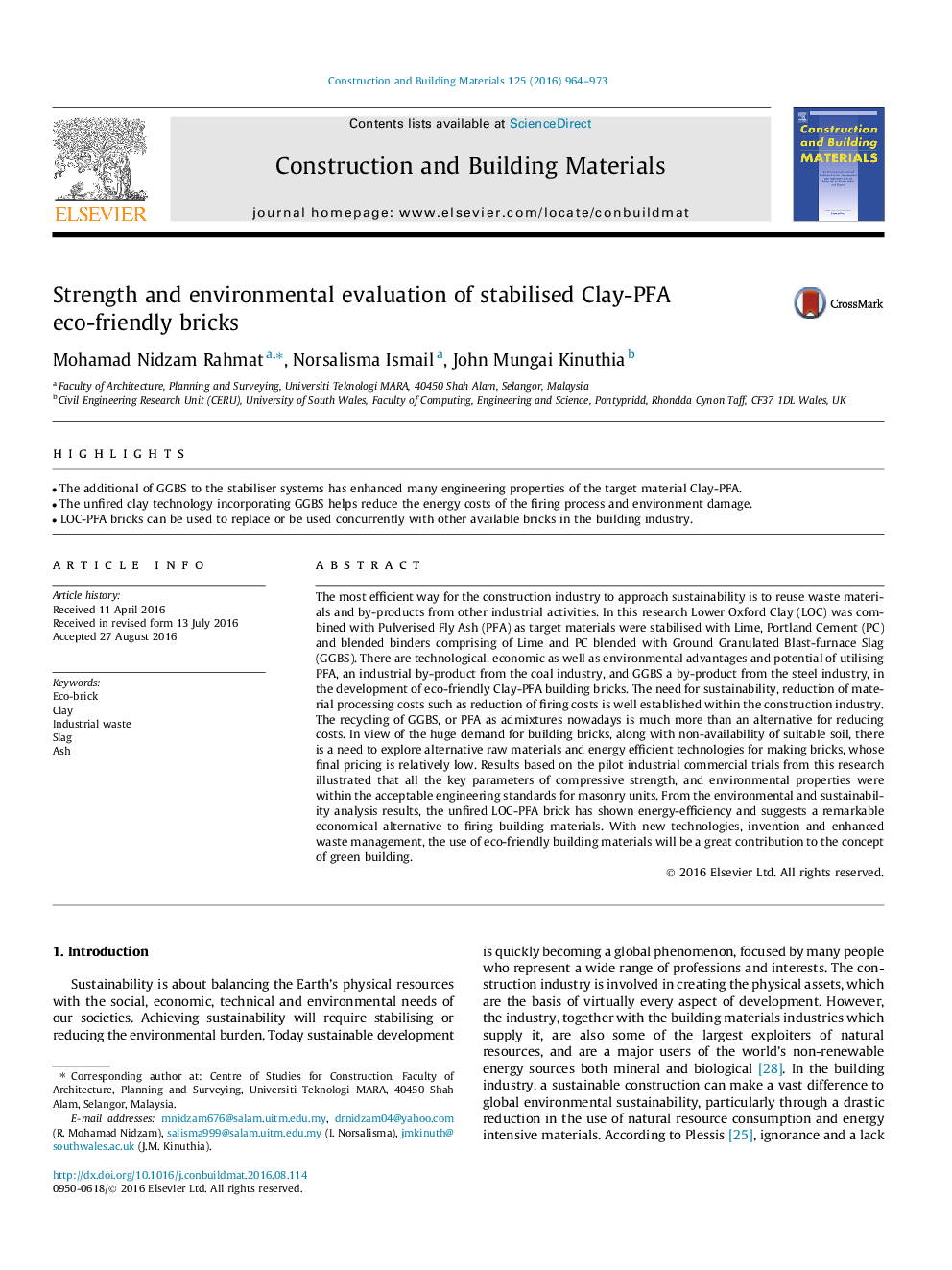| Article ID | Journal | Published Year | Pages | File Type |
|---|---|---|---|---|
| 4918684 | Construction and Building Materials | 2016 | 10 Pages |
Abstract
The most efficient way for the construction industry to approach sustainability is to reuse waste materials and by-products from other industrial activities. In this research Lower Oxford Clay (LOC) was combined with Pulverised Fly Ash (PFA) as target materials were stabilised with Lime, Portland Cement (PC) and blended binders comprising of Lime and PC blended with Ground Granulated Blast-furnace Slag (GGBS). There are technological, economic as well as environmental advantages and potential of utilising PFA, an industrial by-product from the coal industry, and GGBS a by-product from the steel industry, in the development of eco-friendly Clay-PFA building bricks. The need for sustainability, reduction of material processing costs such as reduction of firing costs is well established within the construction industry. The recycling of GGBS, or PFA as admixtures nowadays is much more than an alternative for reducing costs. In view of the huge demand for building bricks, along with non-availability of suitable soil, there is a need to explore alternative raw materials and energy efficient technologies for making bricks, whose final pricing is relatively low. Results based on the pilot industrial commercial trials from this research illustrated that all the key parameters of compressive strength, and environmental properties were within the acceptable engineering standards for masonry units. From the environmental and sustainability analysis results, the unfired LOC-PFA brick has shown energy-efficiency and suggests a remarkable economical alternative to firing building materials. With new technologies, invention and enhanced waste management, the use of eco-friendly building materials will be a great contribution to the concept of green building.
Keywords
Related Topics
Physical Sciences and Engineering
Engineering
Civil and Structural Engineering
Authors
Mohamad Nidzam Rahmat, Norsalisma Ismail, John Mungai Kinuthia,
